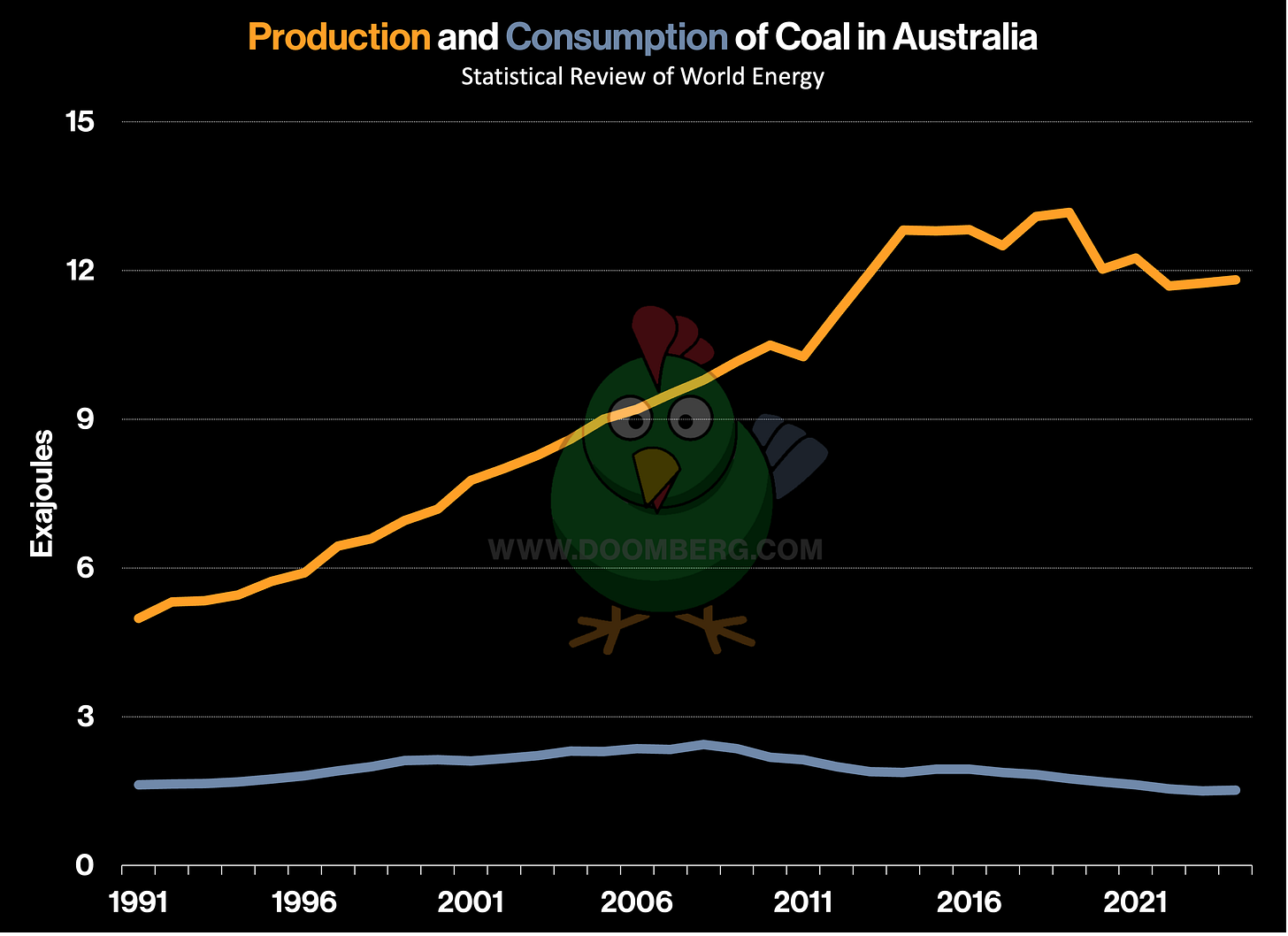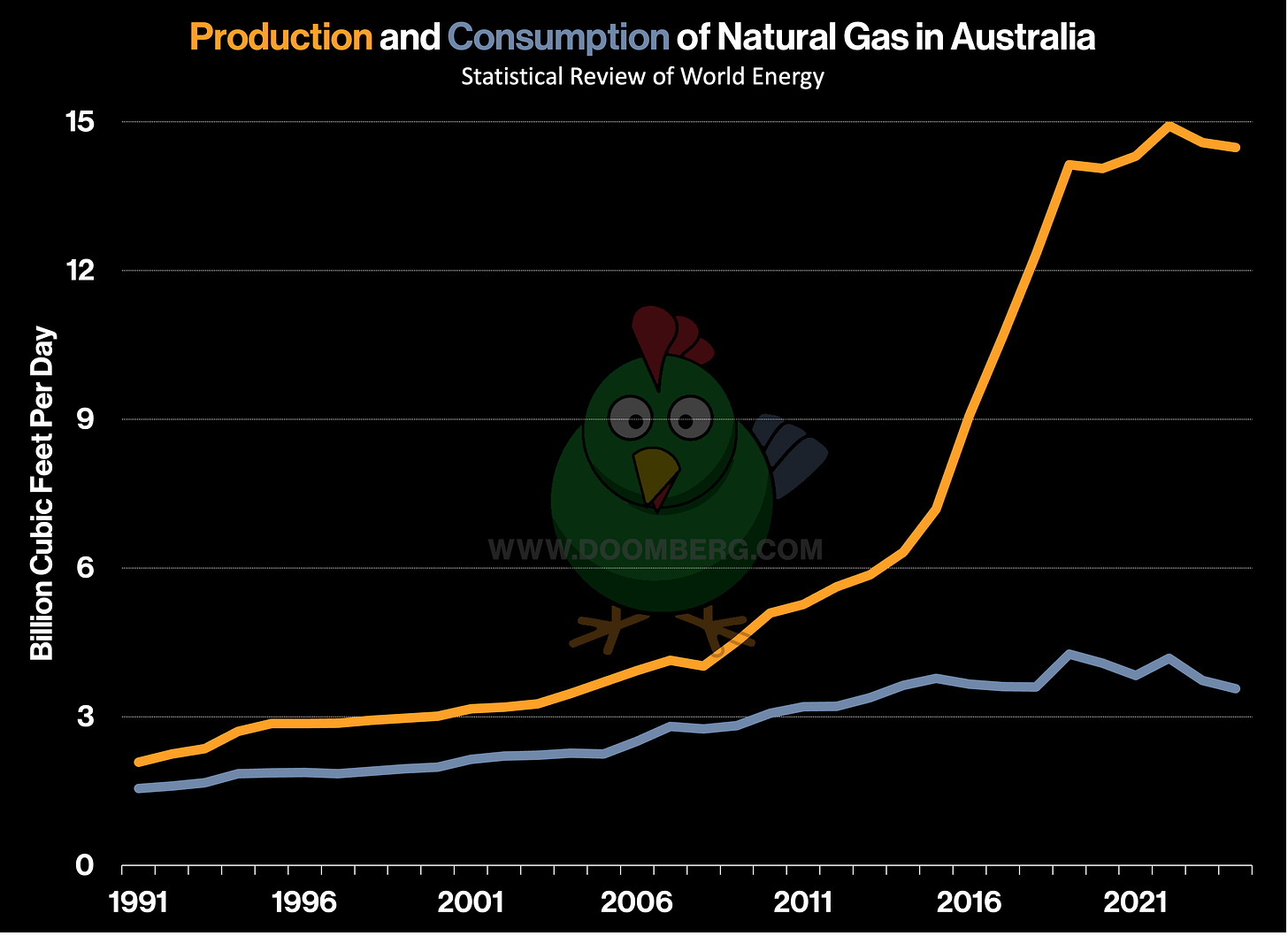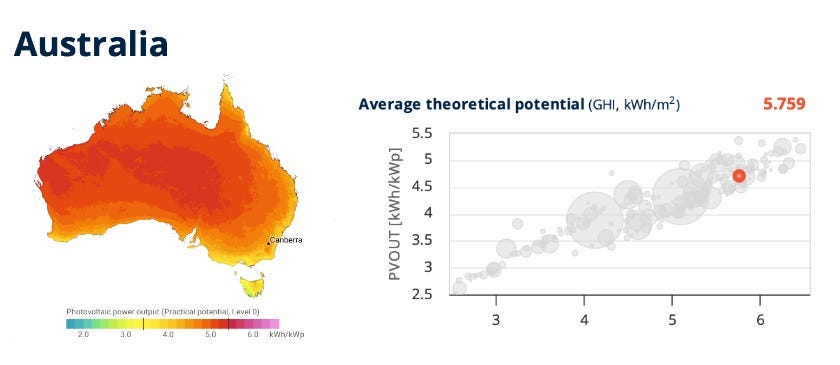The Exception That Proves the Rule
Energy-rich Australia hurtles toward grid collapse.
“Wherever you go, no matter what the weather, always bring your own sunshine.” – Anthony J. D’Angelo
By most measures, Australia is an energy and resource superpower. While it is relatively short on oil, it holds vast reserves of coal, natural gas, lithium, uranium, and other critical materials. Populated by just 27 million people, Australia’s natural bounty has helped generate one of the world’s highest per-capita living standards.
Australia also produces substantially more hydrocarbons than it consumes, giving it an outsized influence in global energy markets. According to data from the newly released Statistical Review of World Energy, the country mined nearly eight times as much coal as it burned…
…and drilled four times as much natural gas.
Beyond these advantages, the country boasts an ideal setup for renewable electricity generation. Its expansive coastline and diverse geography offer excellent wind potential, while consistently bright and intense sunlight makes it a would-be solar powerhouse. According to a detailed country-by-country analysis by the World Bank Group, Australia ranks near the top in solar potential, with some of its largest commercial solar farms achieving capacity factors over 40%.
Having been dealt this near-perfect hand of cards, Australia has embarked on one of the most aggressive energy transitions in the world. Alongside a frenzy of new wind and solar installations, the country has been rapidly shuttering coal-fired power plants, with demand for the fuel falling more than 35% from its peak. Lo and behold, the electricity grid in Australia now faces serious challenges:
“The head of one of Australia's biggest power retailers has warned that Australia's energy transition is veering out of control, pointing to a major market disruption that hit New South Wales as evidence of the turmoil. During a week in which NSW agreed to extend the life of the state's biggest coal plant, Alinta boss Jeff Dimery cited dramatic events in the market earlier in the month to argue the system was in distress.
The Australian Energy Market Operator was forced to step into the NSW market and cap wholesale prices between May 8 and 15 after a series of shocks sent costs into orbit. It's believed to be only the second time the market operator has had to make such an intervention in NSW — the first being the energy crisis of 2022.”
The Australian situation offers a clear case study in why electricity grids become more expensive and less reliable once a threshold of intermittent renewables is reached. No matter how intense the propaganda, the hard rules of physics cannot be wished away. Unless Australia changes track away from further renewables penetration, its destination is both dire and certain.
To grasp the inevitability of these challenges, one must understand the basics of modern grid operation relative to the fuels available. Let’s shine some light on reality.




